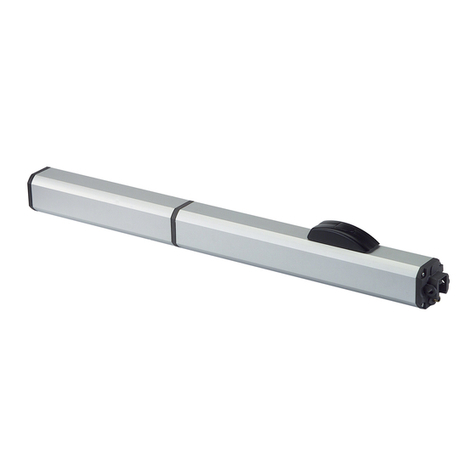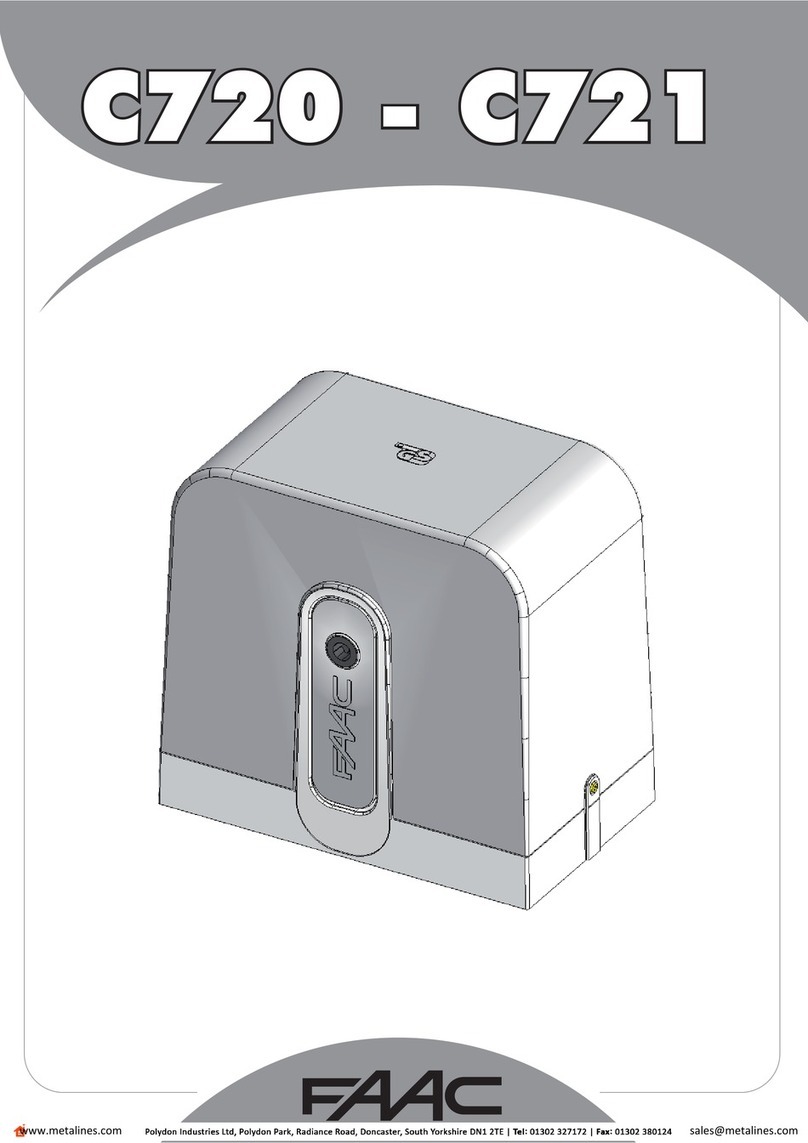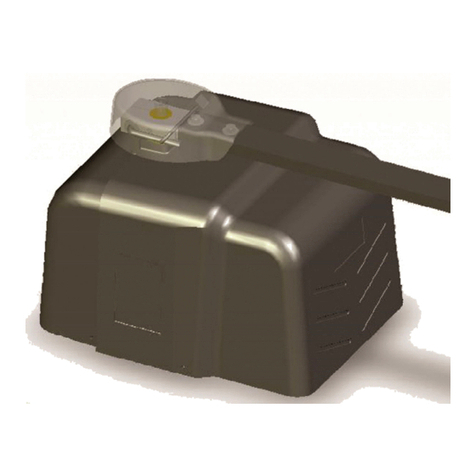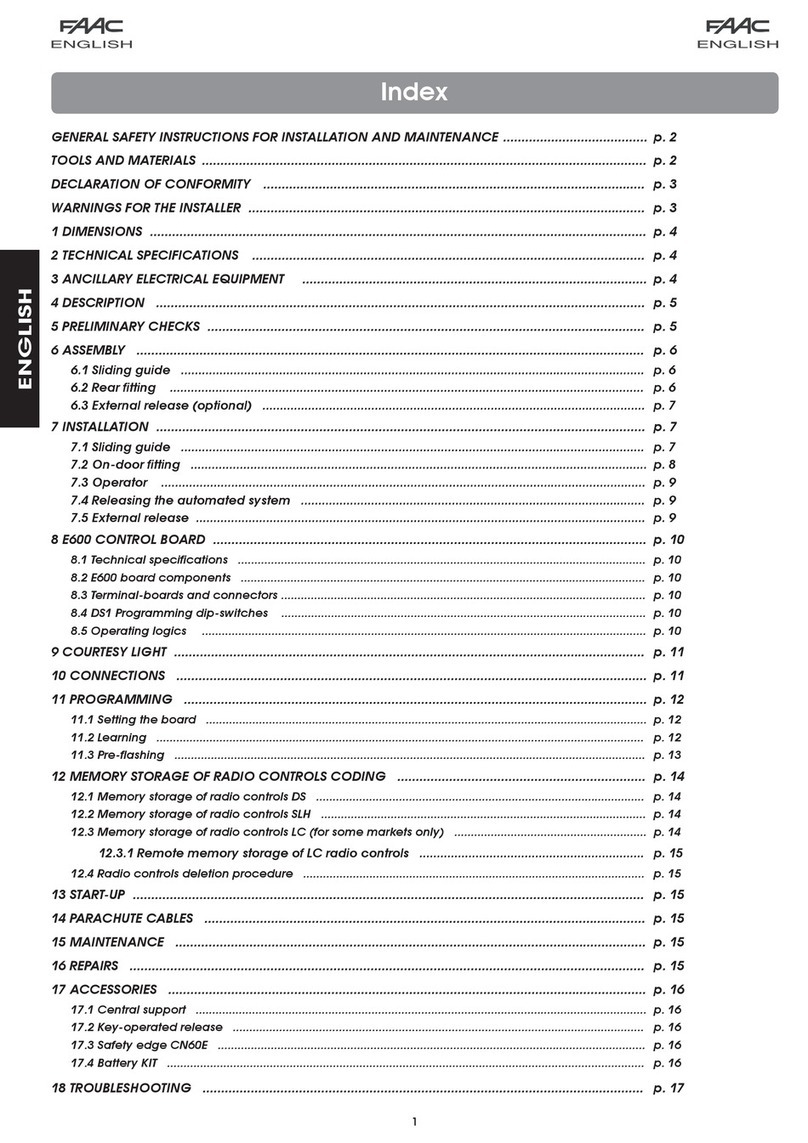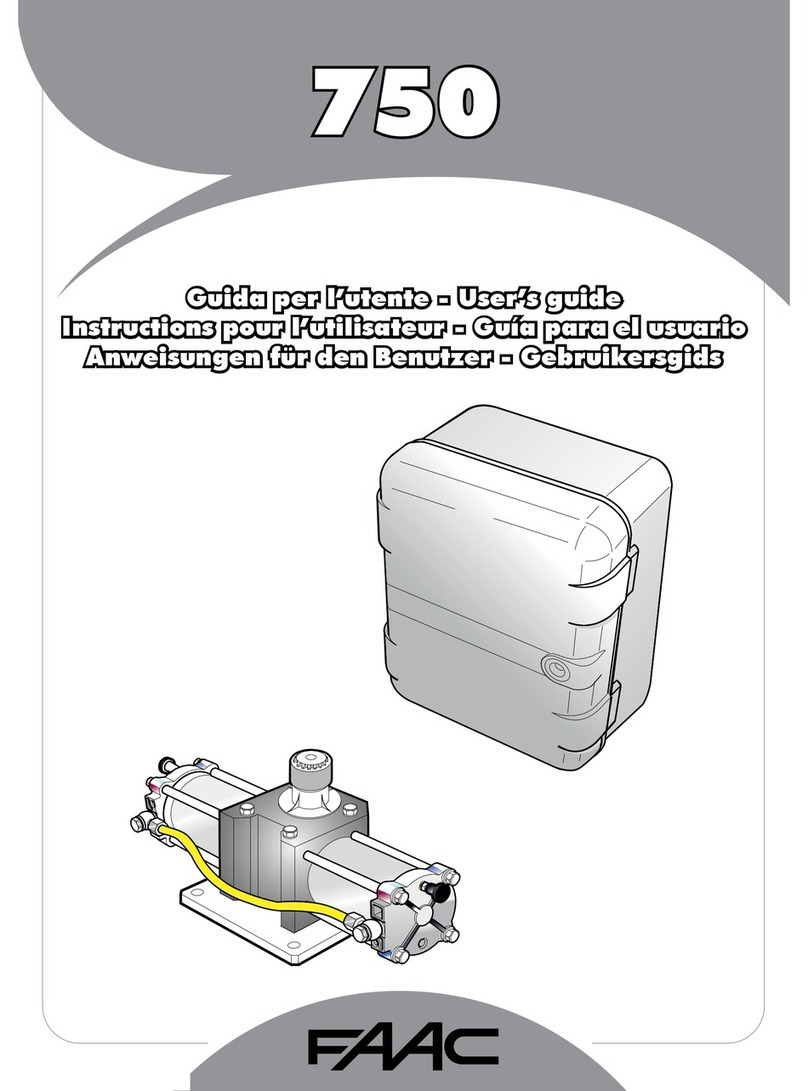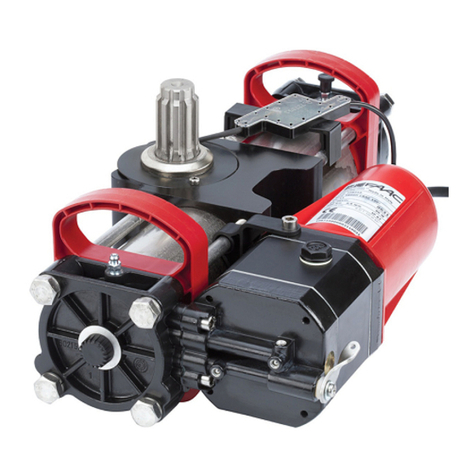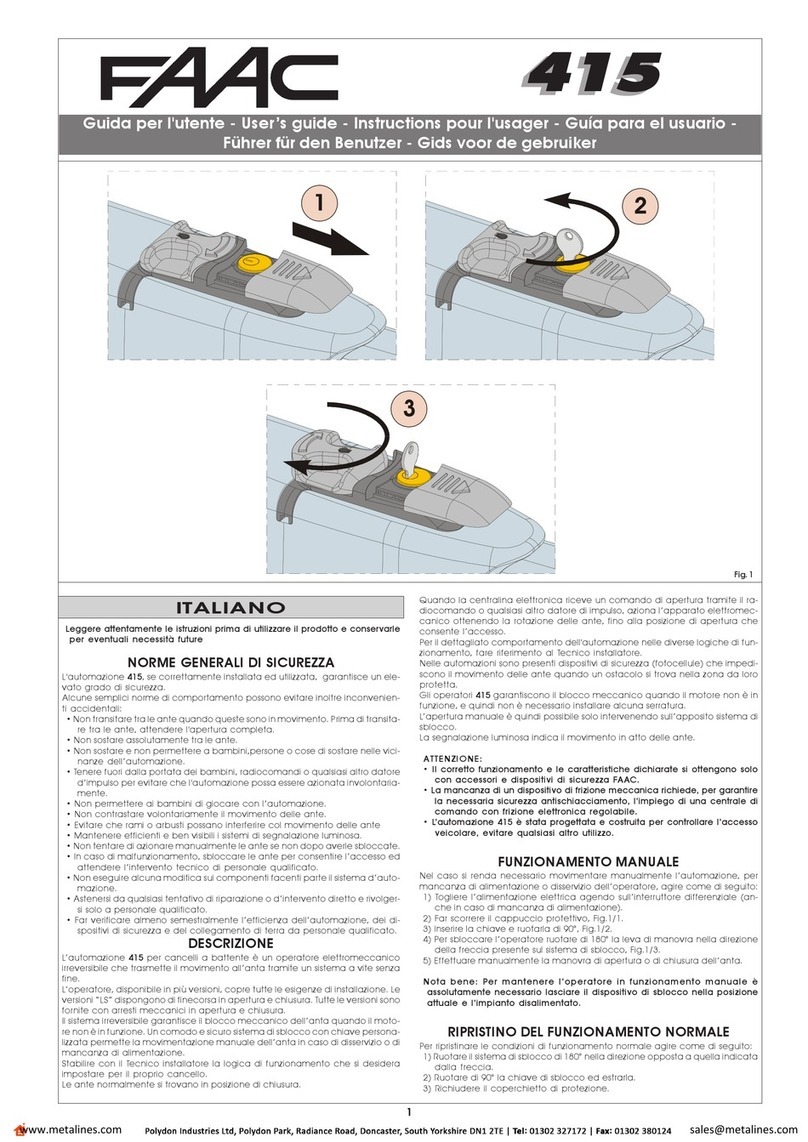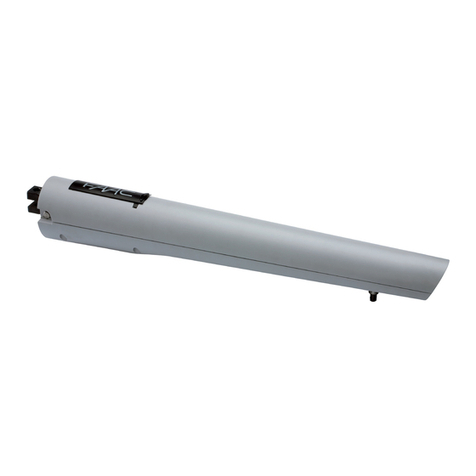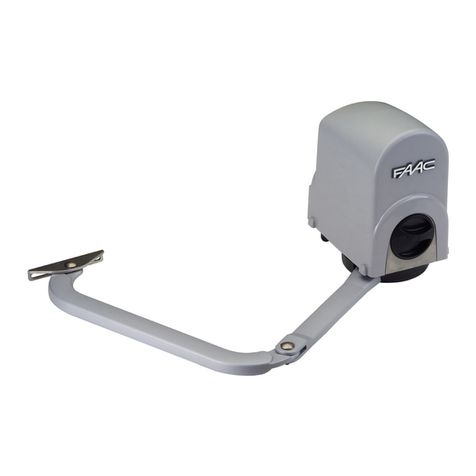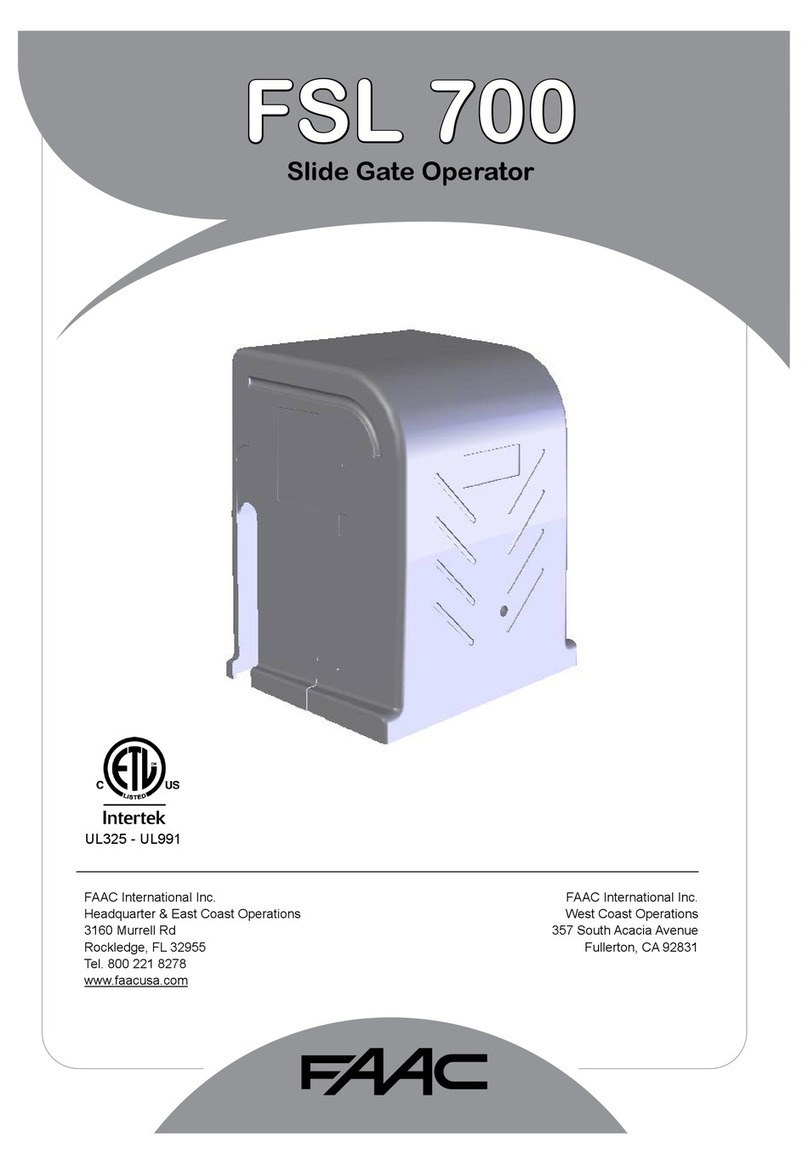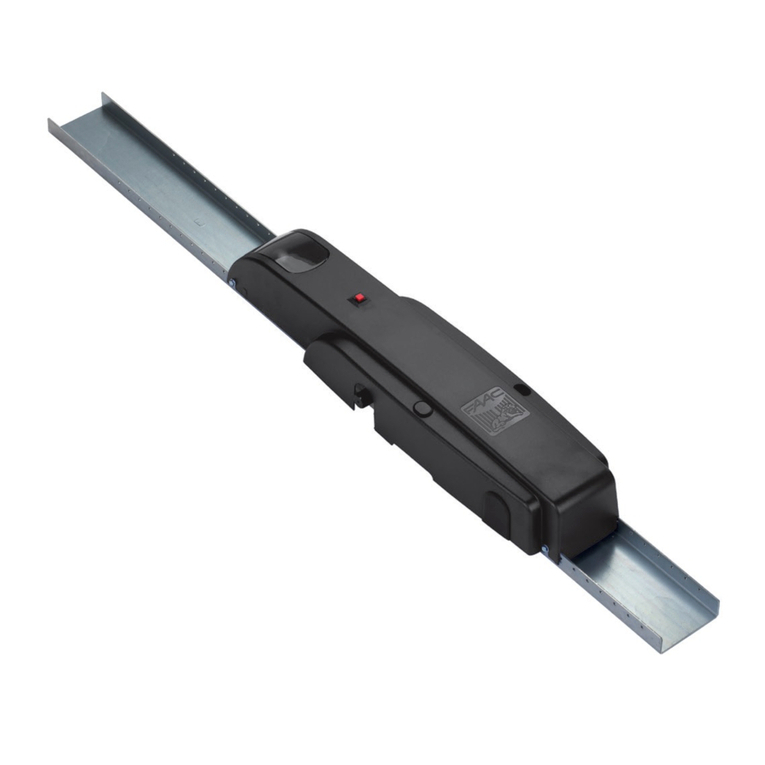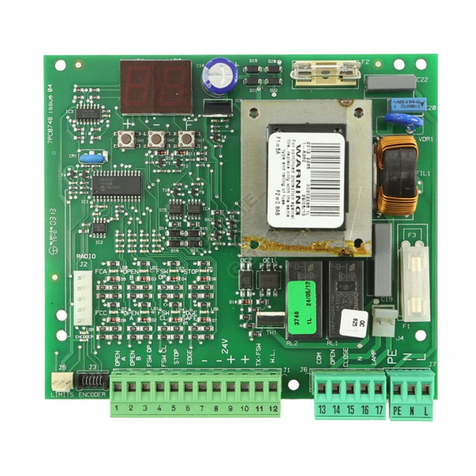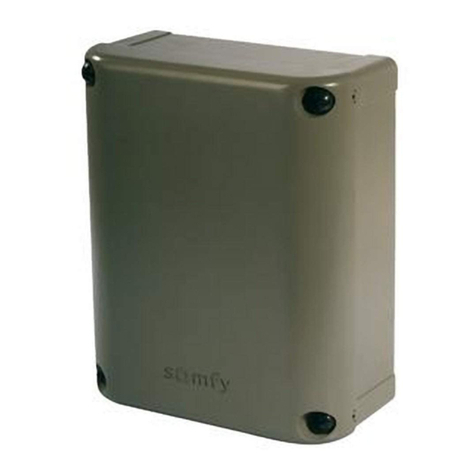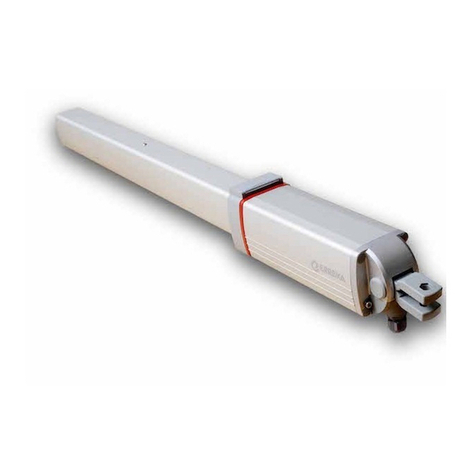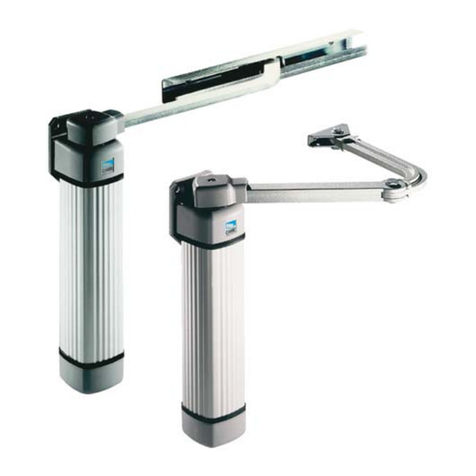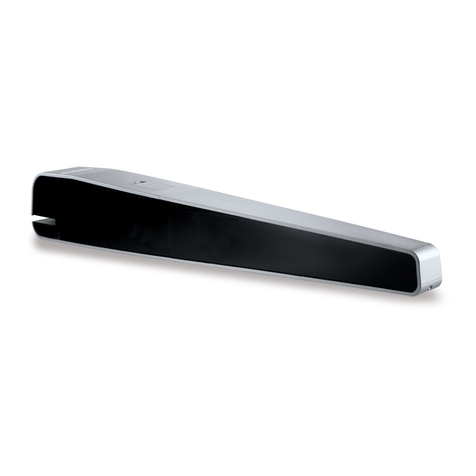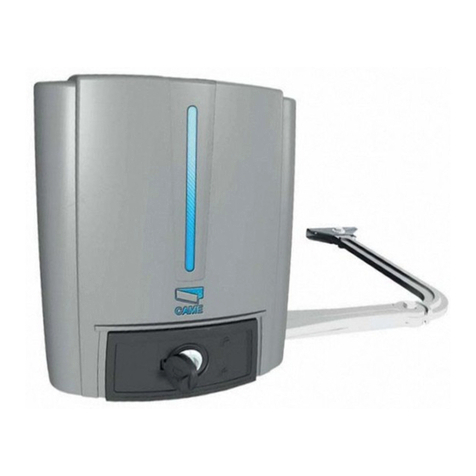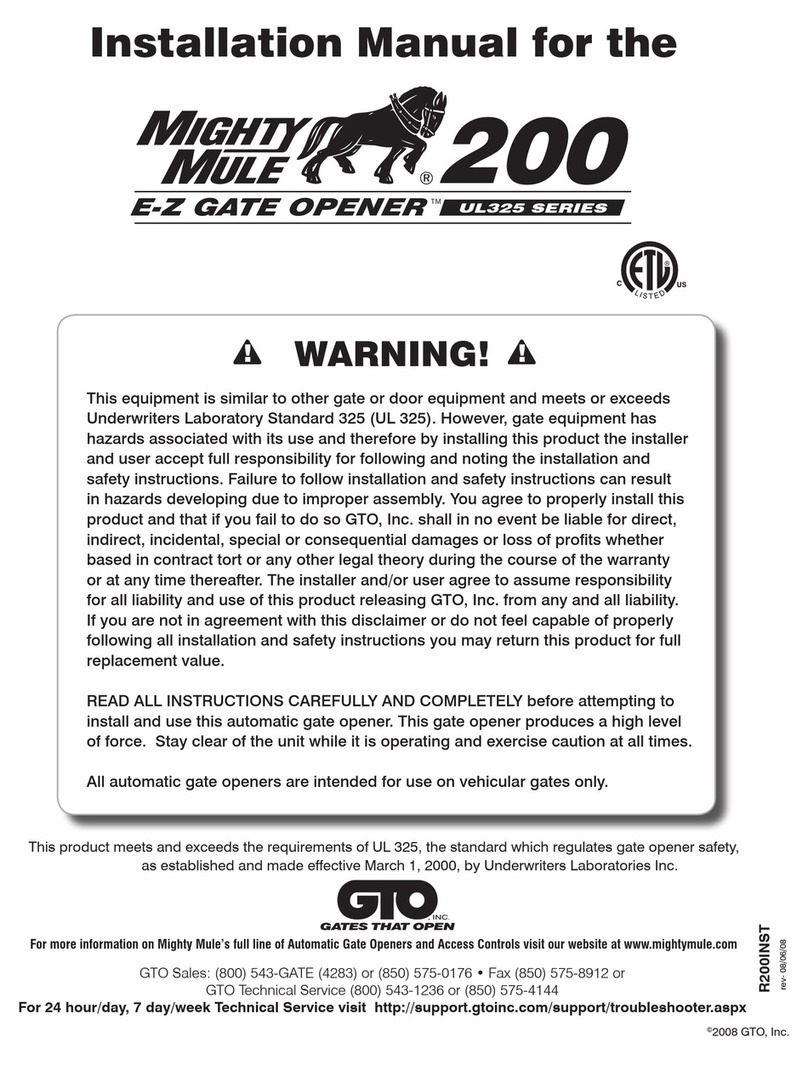13
ENGLISHENGLISH
End-User Guide
400 Automation Systems
Readtheenduserguidecarefullybeforeusingtheproductand
keep it in a safe place for future reference.
GENERAL SAFETY REGULATIONS
Whencorrectlyinstalledandused,the412Compactautomation
systemensuresahighdegreeofsafety.
A few simple rules should be followed to prevent accidental
problems.
- Do not pass between the leaves when they are still moving:
alwayswaituntilthey have openedcompletely.
- Donotlingerbetweentheleaves.
- Donotlingerneartheautomationsystem;donotallowchildren
or adults to linger near it; and do not leave objects near it.
- Keep wireless control devices, or other devices that might
accidentallyactivatetheautomationsystem,outofthereach
ofchildren.
- Do not allow children to play with the automation system.
- Donotimpedethemovementofthegateleaves.
- Donotallowbranchesorbushestointerferewiththemovement
ofthe gateleaves.
- Ensure that the warning lamps are in always in working order
andvisible.
- Donotattempttomovetheleavesmanuallyunlessyouhave
firstunlockedthem.
- Incaseofamalfunction,unlocktheleavestoallowvehiclesto
pass, and call a qualified technician.
- If you have set the manual mode, before restoring normal
operation,disconnectthepowersupply.
- Donotmodifythecomponentsoftheautomationsystem.
- Donotattempttorepairtheautomationsystemortoperform
any operation on it. Call a qualified technician.
- Atleastonceevery6months,havequalifiedpersonnelcheck
that the automation system, safety devices and earth
connectionareinworkingorder.
DESCRIPTION
Theseinstructionsapply tothe following models:
400 CBC - 400 SB - 400 SBS - 400 CBAC - 400 CBACR -
400 CBAC long - 400 SB long.
The FAAC 400 automation for swing gates is a hydraulic unit
comprising an electric pump and a hydraulic piston which
transmitsmotiontothegateleaf.
Modelsfittedwithhydrauliclocksdonotrequiretheinstallation
ofanelectriclock,asthehydrualicsystemensuresthatthegate
leafis mechanicallylocked whenthemotorisnotinoperation.
Modelswithouthydrauliclocksmustbefitted withoneormore
electriclockstoensure mechanicallockingofthegateleaves.
The FAAC 400 can automate gate leaves up to 7 m in length,
depending onthemodel.
The operators are controlled by an electronic control unit,
housed in an enclosure which assures adequate protection
againstatmosphericagents.
Theleavesarenormallyclosed.Whentheelectroniccontrolunit
receivesanopencommandfromtheremoteradiocontrolorany
othercontroldevice,itactivatestheelectromechanicalsystem
andcausestheleavestorotatebyanangleofupto110°totheir
openposition,so astoallow access.
If automatic operation has been selected, the leaves close
automaticallyaftertheselectedpausetime.
If semiautomaticoperationhasbeenselected,asecondimpulse
mustbesent toclosetheleaves.
Anopencommandgivenwhiletheleavesareclosingcausesthe
leavestoreversedirectionofmovement.
Astopcommand(ifavailable) stops movement atanytime.
For detailed information on the operation of the automation
system in the various operating modes, consult the installation
technician.
The automation system is equipped with a photocell safety
device which prevents the leaves from closing when the
photocellsareobscuredby an obstacle.
The 400 automation system is also equipped with an anti-
crushingsafetydevice(fittedasstandard)thatlimitsthetorque
transmittedtotheleaves.
The operators ensure that the system is mechanically locked
whenthemotorisnotrunning,sothereisnoneedtoinstallalock.
The leaves can be opened manually only after operating the
releasedevice.
Thelampflasheswhiletheleavesaremoving.
MANUAL OPERATION
If the gate has to be operated manually due to a malfunction
orpowersupplyfailure,removetheslidingcoverandinsertthe
keyprovidedinto thereleasesystem asshowninFig. 1.
Toreleasetheoperator,turnthekeya full turnanticlockwise, as
indicated in Fig. 1.
Openorclosethe leafmanually.
N.B.:ONMODELS WITHOUT HYDRUALICLOCKS ITWILLALSO BE
NECESSARY TO MANUALLY RELEASE THE ELECTRIC LOCK.
RETURNING TO NORMAL OPERATION
To prevent accidental operation during this procedure,
disconnectthesystemfromthepowersupplybeforere-locking
theoperators.
Tore-locktheoperator,turnthe key clockwise (Fig. 1).
Fig. 1
Fig. 1
SX DX
SBLOCCA
BLOCCA
UNLOCK
LOCK
SBLOCCA
BLOCCA
LOCK
UNLOCK




